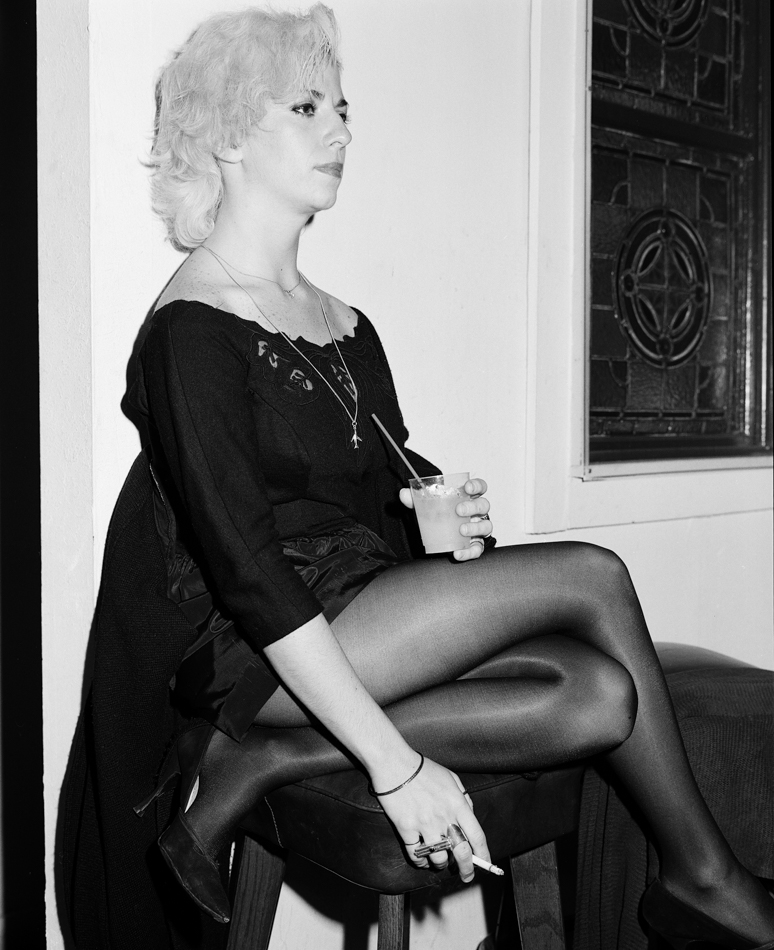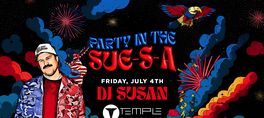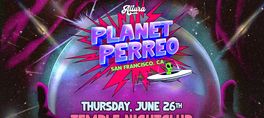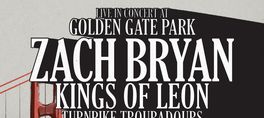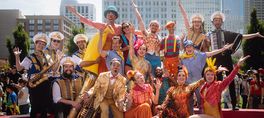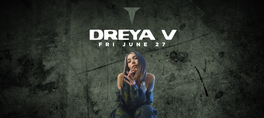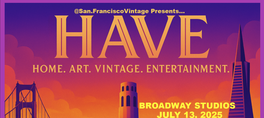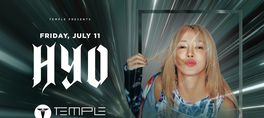"What Is Remembered," Photographs by Mimi Plumb
In her later teens and early 20s, Mimi Plumb went back to where she was from, suburbia. She photographed the landscape of her childhood: the mushrooming housing developments, suburban malls, the county fairs, the torn up swaths of land, and most importantly the people living there, the kids, the teenagers, the adults, all reminders of her youth... Throughout her childhood years, in the 1950s and 1960s, growing up beneath the shadow of Mt. Diablo in the California suburb of Walnut Creek, Plumb watched the rolling hills and green valleys be developed with tract homes and strip malls. To her and her teenage friends, they were the blandest, saddest homes in the world. Suburbia also stood in stark contrast to the cultural and violent upheavals taking place across the country, the shooting of John F. Kennedy, the ongoing threat of nuclear war, the civil rights movement, and the anti-war movement. Suburbia felt like a cultural wasteland, something of a purgatory to her. Mimi Plumb got out as quickly as she could upon graduating from high school.
In 1972 as a student at the San Francisco Art Institute, she realized that she wanted to photograph where she came from and what had shaped her. Off and on during the 1970s, Plumb photographed various suburban communities throughout the Bay Area, particularly in Walnut Creek and Marin County. These pictures she recently revisited and scanned, then collected into a series called What Is Remembered…
What is remembered? The teenagers with their sullen, whadda you want, I’m not going to tell you anything gaze. Plumb got it. It was how she looked as she was growing up: cool, very cool. For her, this place of extreme alienation, of land being constantly torn up and divided into subdivisions, the land of Ed Rusha’s Standard gas stations, this place, this is where Mimi Plumb came from, and what she remembered.
Besides the landscape of her childhood, RayKo is also honored to exhibit another era of Mimi Plumb’s work. The 1980s, when the photographer returned to the city, having left not just the suburbs, but also an extensive stint in the Central Valley with Cesar Chavez and the farm workers. The 1980s portraits, mostly of San Francisco city life, are the landscape of Plumb’s young adulthood. The images attempt to capture the anxieties of a world spinning out of balance, similar to what many are experiencing in today’s world. Global warming, civil wars in the Middle East and Central America, and the election of a former movie actor, Ronald Reagan, to the presidency of the United States, all contributed to the the punk diaspora of the 80’s and the sense of no future. Dressing up, going out with friends, from photographs such as the Woman at the Crystal Pistol (a punk/transgender bar in the Mission district) to Richard at the Palace (a now defunct landmark pool/billiards hall on Market Street), to Tang at the Bowling Alley (Serra Bowl in South San Francisco) and Neil at the Dance (singer in the legendary San Francisco punk polka band Polkacide), the images document a slice of San Francisco night life. A few of the portraits in this group are a glance back at Plumb’s suburban roots like Kim in Palm Springs, Two Women in Fur Coats at the Lookout, and Brie at the Motel.
Both collections of pictures in the upcoming show at RayKo Photo Center are personal and autobiographical in content as well as charged and electrical. To quote Stephen McLaren, “By the time she was in her mid-20s, Mimi Plumb turned her attention to the suburbs that were spreading out into the hillsides around Berkeley and Oakland. These pictures that she describes as being the landscapes of her childhood have remained untouched for more than 30 years and only recently has she been able to put together an edit called What is Remembered. It’s not hard to discern the influence of Robert Frank and Henry Wessel in these images, shot in the full beam of the California sunshine, but the sensibility on display is not of someone passing through, but from someone who knows the locale intimately. Occasionally, we find images of gawky teenagers hanging out, and these portraits remind us that the photographer was a young woman herself who identified with the listlessness and ennui of growing up in the burbs.” (BRITISH JOURNAL OF PHOTOGRAPHY, SEPTEMBER 2015, Cover Story, California Redux)
I have watched with interest as Mimi Plumb has been slowly bringing her archive into public view after all these years. I showed a selection of her Dark Days work in my exhibit, San Francisco Days. I also built the exhibition, The Valley, at San Francisco’s City Hall around her farm worker images. And now, it is my sincere pleasure to have a mini retrospective of Plumb’s photographs in the exhibition, What is Remembered at RayKo Photo Center opening on May 5, 2016. Mimi Plumb is one of the best street shooters of that era, holding up to the greats, but she has something else that Winogrand and Frank and Wessel didn’t have, a feminine eye. A sensibility that the men didn’t have. There is something incredible raw about her pictures. I hope you will come see for yourself in May.
About RayKo
RayKo Photo Center & Gallery is a comprehensive photographic facility, located near the Yerba Buena Arts District, with resources for anyone with a passion for photography. Established in the early 1990’s, RayKo Photo Center has grown to become one of San Francisco’s most beloved photography darkroom spaces; it includes traditional b&w, color and alternative process labs as well as a state-of-the-art digital department, a professional rental studio, galleries, and the Photographer’s Marketplace – a retail space promoting the work of regional artists. RayKo also has San Francisco’s 1st Art*O*Mat vending machine and a vintage 1947 black & white Auto-Photo Booth and a retail store that sells all types of used film cameras, from view cameras to Leicas to a build-your-own Nikon station. Everything you need to make any type of photograph!
RayKo Gallery serves to advance public appreciation of photography and create opportunities for regional, national and international artists to create and present their work. RayKo Gallery offers 1600 square feet of exhibition space and the Photographer’s Marketplace, which encourages the collection of artwork by making it accessible to collectors of all levels. RayKo also has a thriving artist-in-residence program that further supports artists in the development of their photographic projects and ideas. Current resident artist, Carlos Javier Ortiz just received a Guggenheim grant as did 2013 resident, McNair Evans.
RayKo Photo Center & Gallery
428 Third Street
San Francisco, CA 94107
415-495-3773 (ph)
https://www.raykophoto.com
Tuesday-Thursday: 10-10 pm, Friday-Sunday: 10-8 pm, Monday: closed
show less
In her later teens and early 20s, Mimi Plumb went back to where she was from, suburbia. She photographed the landscape of her childhood: the mushrooming housing developments, suburban malls, the county fairs, the torn up swaths of land, and most importantly the people living there, the kids, the teenagers, the adults, all reminders of her youth... Throughout her childhood years, in the 1950s and 1960s, growing up beneath the shadow of Mt. Diablo in the California suburb of Walnut Creek, Plumb watched the rolling hills and green valleys be developed with tract homes and strip malls. To her and her teenage friends, they were the blandest, saddest homes in the world. Suburbia also stood in stark contrast to the cultural and violent upheavals taking place across the country, the shooting of John F. Kennedy, the ongoing threat of nuclear war, the civil rights movement, and the anti-war movement. Suburbia felt like a cultural wasteland, something of a purgatory to her. Mimi Plumb got out as quickly as she could upon graduating from high school.
In 1972 as a student at the San Francisco Art Institute, she realized that she wanted to photograph where she came from and what had shaped her. Off and on during the 1970s, Plumb photographed various suburban communities throughout the Bay Area, particularly in Walnut Creek and Marin County. These pictures she recently revisited and scanned, then collected into a series called What Is Remembered…
What is remembered? The teenagers with their sullen, whadda you want, I’m not going to tell you anything gaze. Plumb got it. It was how she looked as she was growing up: cool, very cool. For her, this place of extreme alienation, of land being constantly torn up and divided into subdivisions, the land of Ed Rusha’s Standard gas stations, this place, this is where Mimi Plumb came from, and what she remembered.
Besides the landscape of her childhood, RayKo is also honored to exhibit another era of Mimi Plumb’s work. The 1980s, when the photographer returned to the city, having left not just the suburbs, but also an extensive stint in the Central Valley with Cesar Chavez and the farm workers. The 1980s portraits, mostly of San Francisco city life, are the landscape of Plumb’s young adulthood. The images attempt to capture the anxieties of a world spinning out of balance, similar to what many are experiencing in today’s world. Global warming, civil wars in the Middle East and Central America, and the election of a former movie actor, Ronald Reagan, to the presidency of the United States, all contributed to the the punk diaspora of the 80’s and the sense of no future. Dressing up, going out with friends, from photographs such as the Woman at the Crystal Pistol (a punk/transgender bar in the Mission district) to Richard at the Palace (a now defunct landmark pool/billiards hall on Market Street), to Tang at the Bowling Alley (Serra Bowl in South San Francisco) and Neil at the Dance (singer in the legendary San Francisco punk polka band Polkacide), the images document a slice of San Francisco night life. A few of the portraits in this group are a glance back at Plumb’s suburban roots like Kim in Palm Springs, Two Women in Fur Coats at the Lookout, and Brie at the Motel.
Both collections of pictures in the upcoming show at RayKo Photo Center are personal and autobiographical in content as well as charged and electrical. To quote Stephen McLaren, “By the time she was in her mid-20s, Mimi Plumb turned her attention to the suburbs that were spreading out into the hillsides around Berkeley and Oakland. These pictures that she describes as being the landscapes of her childhood have remained untouched for more than 30 years and only recently has she been able to put together an edit called What is Remembered. It’s not hard to discern the influence of Robert Frank and Henry Wessel in these images, shot in the full beam of the California sunshine, but the sensibility on display is not of someone passing through, but from someone who knows the locale intimately. Occasionally, we find images of gawky teenagers hanging out, and these portraits remind us that the photographer was a young woman herself who identified with the listlessness and ennui of growing up in the burbs.” (BRITISH JOURNAL OF PHOTOGRAPHY, SEPTEMBER 2015, Cover Story, California Redux)
I have watched with interest as Mimi Plumb has been slowly bringing her archive into public view after all these years. I showed a selection of her Dark Days work in my exhibit, San Francisco Days. I also built the exhibition, The Valley, at San Francisco’s City Hall around her farm worker images. And now, it is my sincere pleasure to have a mini retrospective of Plumb’s photographs in the exhibition, What is Remembered at RayKo Photo Center opening on May 5, 2016. Mimi Plumb is one of the best street shooters of that era, holding up to the greats, but she has something else that Winogrand and Frank and Wessel didn’t have, a feminine eye. A sensibility that the men didn’t have. There is something incredible raw about her pictures. I hope you will come see for yourself in May.
About RayKo
RayKo Photo Center & Gallery is a comprehensive photographic facility, located near the Yerba Buena Arts District, with resources for anyone with a passion for photography. Established in the early 1990’s, RayKo Photo Center has grown to become one of San Francisco’s most beloved photography darkroom spaces; it includes traditional b&w, color and alternative process labs as well as a state-of-the-art digital department, a professional rental studio, galleries, and the Photographer’s Marketplace – a retail space promoting the work of regional artists. RayKo also has San Francisco’s 1st Art*O*Mat vending machine and a vintage 1947 black & white Auto-Photo Booth and a retail store that sells all types of used film cameras, from view cameras to Leicas to a build-your-own Nikon station. Everything you need to make any type of photograph!
RayKo Gallery serves to advance public appreciation of photography and create opportunities for regional, national and international artists to create and present their work. RayKo Gallery offers 1600 square feet of exhibition space and the Photographer’s Marketplace, which encourages the collection of artwork by making it accessible to collectors of all levels. RayKo also has a thriving artist-in-residence program that further supports artists in the development of their photographic projects and ideas. Current resident artist, Carlos Javier Ortiz just received a Guggenheim grant as did 2013 resident, McNair Evans.
RayKo Photo Center & Gallery
428 Third Street
San Francisco, CA 94107
415-495-3773 (ph)
https://www.raykophoto.com
Tuesday-Thursday: 10-10 pm, Friday-Sunday: 10-8 pm, Monday: closed
"What Is Remembered," Photographs by Mimi Plumb
In her later teens and early 20s, Mimi Plumb went back to where she was from, suburbia. She photographed the landscape of her childhood: the mushrooming housing developments, suburban malls, the county fairs, the torn up swaths of land, and most importantly the people living there, the kids, the teenagers, the adults, all reminders of her youth... Throughout her childhood years, in the 1950s and 1960s, growing up beneath the shadow of Mt. Diablo in the California suburb of Walnut Creek, Plumb watched the rolling hills and green valleys be developed with tract homes and strip malls. To her and her teenage friends, they were the blandest, saddest homes in the world. Suburbia also stood in stark contrast to the cultural and violent upheavals taking place across the country, the shooting of John F. Kennedy, the ongoing threat of nuclear war, the civil rights movement, and the anti-war movement. Suburbia felt like a cultural wasteland, something of a purgatory to her. Mimi Plumb got out as quickly as she could upon graduating from high school.
In 1972 as a student at the San Francisco Art Institute, she realized that she wanted to photograph where she came from and what had shaped her. Off and on during the 1970s, Plumb photographed various suburban communities throughout the Bay Area, particularly in Walnut Creek and Marin County. These pictures she recently revisited and scanned, then collected into a series called What Is Remembered…
What is remembered? The teenagers with their sullen, whadda you want, I’m not going to tell you anything gaze. Plumb got it. It was how she looked as she was growing up: cool, very cool. For her, this place of extreme alienation, of land being constantly torn up and divided into subdivisions, the land of Ed Rusha’s Standard gas stations, this place, this is where Mimi Plumb came from, and what she remembered.
Besides the landscape of her childhood, RayKo is also honored to exhibit another era of Mimi Plumb’s work. The 1980s, when the photographer returned to the city, having left not just the suburbs, but also an extensive stint in the Central Valley with Cesar Chavez and the farm workers. The 1980s portraits, mostly of San Francisco city life, are the landscape of Plumb’s young adulthood. The images attempt to capture the anxieties of a world spinning out of balance, similar to what many are experiencing in today’s world. Global warming, civil wars in the Middle East and Central America, and the election of a former movie actor, Ronald Reagan, to the presidency of the United States, all contributed to the the punk diaspora of the 80’s and the sense of no future. Dressing up, going out with friends, from photographs such as the Woman at the Crystal Pistol (a punk/transgender bar in the Mission district) to Richard at the Palace (a now defunct landmark pool/billiards hall on Market Street), to Tang at the Bowling Alley (Serra Bowl in South San Francisco) and Neil at the Dance (singer in the legendary San Francisco punk polka band Polkacide), the images document a slice of San Francisco night life. A few of the portraits in this group are a glance back at Plumb’s suburban roots like Kim in Palm Springs, Two Women in Fur Coats at the Lookout, and Brie at the Motel.
Both collections of pictures in the upcoming show at RayKo Photo Center are personal and autobiographical in content as well as charged and electrical. To quote Stephen McLaren, “By the time she was in her mid-20s, Mimi Plumb turned her attention to the suburbs that were spreading out into the hillsides around Berkeley and Oakland. These pictures that she describes as being the landscapes of her childhood have remained untouched for more than 30 years and only recently has she been able to put together an edit called What is Remembered. It’s not hard to discern the influence of Robert Frank and Henry Wessel in these images, shot in the full beam of the California sunshine, but the sensibility on display is not of someone passing through, but from someone who knows the locale intimately. Occasionally, we find images of gawky teenagers hanging out, and these portraits remind us that the photographer was a young woman herself who identified with the listlessness and ennui of growing up in the burbs.” (BRITISH JOURNAL OF PHOTOGRAPHY, SEPTEMBER 2015, Cover Story, California Redux)
I have watched with interest as Mimi Plumb has been slowly bringing her archive into public view after all these years. I showed a selection of her Dark Days work in my exhibit, San Francisco Days. I also built the exhibition, The Valley, at San Francisco’s City Hall around her farm worker images. And now, it is my sincere pleasure to have a mini retrospective of Plumb’s photographs in the exhibition, What is Remembered at RayKo Photo Center opening on May 5, 2016. Mimi Plumb is one of the best street shooters of that era, holding up to the greats, but she has something else that Winogrand and Frank and Wessel didn’t have, a feminine eye. A sensibility that the men didn’t have. There is something incredible raw about her pictures. I hope you will come see for yourself in May.
About RayKo
RayKo Photo Center & Gallery is a comprehensive photographic facility, located near the Yerba Buena Arts District, with resources for anyone with a passion for photography. Established in the early 1990’s, RayKo Photo Center has grown to become one of San Francisco’s most beloved photography darkroom spaces; it includes traditional b&w, color and alternative process labs as well as a state-of-the-art digital department, a professional rental studio, galleries, and the Photographer’s Marketplace – a retail space promoting the work of regional artists. RayKo also has San Francisco’s 1st Art*O*Mat vending machine and a vintage 1947 black & white Auto-Photo Booth and a retail store that sells all types of used film cameras, from view cameras to Leicas to a build-your-own Nikon station. Everything you need to make any type of photograph!
RayKo Gallery serves to advance public appreciation of photography and create opportunities for regional, national and international artists to create and present their work. RayKo Gallery offers 1600 square feet of exhibition space and the Photographer’s Marketplace, which encourages the collection of artwork by making it accessible to collectors of all levels. RayKo also has a thriving artist-in-residence program that further supports artists in the development of their photographic projects and ideas. Current resident artist, Carlos Javier Ortiz just received a Guggenheim grant as did 2013 resident, McNair Evans.
RayKo Photo Center & Gallery
428 Third Street
San Francisco, CA 94107
415-495-3773 (ph)
https://www.raykophoto.com
Tuesday-Thursday: 10-10 pm, Friday-Sunday: 10-8 pm, Monday: closed
read more
In her later teens and early 20s, Mimi Plumb went back to where she was from, suburbia. She photographed the landscape of her childhood: the mushrooming housing developments, suburban malls, the county fairs, the torn up swaths of land, and most importantly the people living there, the kids, the teenagers, the adults, all reminders of her youth... Throughout her childhood years, in the 1950s and 1960s, growing up beneath the shadow of Mt. Diablo in the California suburb of Walnut Creek, Plumb watched the rolling hills and green valleys be developed with tract homes and strip malls. To her and her teenage friends, they were the blandest, saddest homes in the world. Suburbia also stood in stark contrast to the cultural and violent upheavals taking place across the country, the shooting of John F. Kennedy, the ongoing threat of nuclear war, the civil rights movement, and the anti-war movement. Suburbia felt like a cultural wasteland, something of a purgatory to her. Mimi Plumb got out as quickly as she could upon graduating from high school.
In 1972 as a student at the San Francisco Art Institute, she realized that she wanted to photograph where she came from and what had shaped her. Off and on during the 1970s, Plumb photographed various suburban communities throughout the Bay Area, particularly in Walnut Creek and Marin County. These pictures she recently revisited and scanned, then collected into a series called What Is Remembered…
What is remembered? The teenagers with their sullen, whadda you want, I’m not going to tell you anything gaze. Plumb got it. It was how she looked as she was growing up: cool, very cool. For her, this place of extreme alienation, of land being constantly torn up and divided into subdivisions, the land of Ed Rusha’s Standard gas stations, this place, this is where Mimi Plumb came from, and what she remembered.
Besides the landscape of her childhood, RayKo is also honored to exhibit another era of Mimi Plumb’s work. The 1980s, when the photographer returned to the city, having left not just the suburbs, but also an extensive stint in the Central Valley with Cesar Chavez and the farm workers. The 1980s portraits, mostly of San Francisco city life, are the landscape of Plumb’s young adulthood. The images attempt to capture the anxieties of a world spinning out of balance, similar to what many are experiencing in today’s world. Global warming, civil wars in the Middle East and Central America, and the election of a former movie actor, Ronald Reagan, to the presidency of the United States, all contributed to the the punk diaspora of the 80’s and the sense of no future. Dressing up, going out with friends, from photographs such as the Woman at the Crystal Pistol (a punk/transgender bar in the Mission district) to Richard at the Palace (a now defunct landmark pool/billiards hall on Market Street), to Tang at the Bowling Alley (Serra Bowl in South San Francisco) and Neil at the Dance (singer in the legendary San Francisco punk polka band Polkacide), the images document a slice of San Francisco night life. A few of the portraits in this group are a glance back at Plumb’s suburban roots like Kim in Palm Springs, Two Women in Fur Coats at the Lookout, and Brie at the Motel.
Both collections of pictures in the upcoming show at RayKo Photo Center are personal and autobiographical in content as well as charged and electrical. To quote Stephen McLaren, “By the time she was in her mid-20s, Mimi Plumb turned her attention to the suburbs that were spreading out into the hillsides around Berkeley and Oakland. These pictures that she describes as being the landscapes of her childhood have remained untouched for more than 30 years and only recently has she been able to put together an edit called What is Remembered. It’s not hard to discern the influence of Robert Frank and Henry Wessel in these images, shot in the full beam of the California sunshine, but the sensibility on display is not of someone passing through, but from someone who knows the locale intimately. Occasionally, we find images of gawky teenagers hanging out, and these portraits remind us that the photographer was a young woman herself who identified with the listlessness and ennui of growing up in the burbs.” (BRITISH JOURNAL OF PHOTOGRAPHY, SEPTEMBER 2015, Cover Story, California Redux)
I have watched with interest as Mimi Plumb has been slowly bringing her archive into public view after all these years. I showed a selection of her Dark Days work in my exhibit, San Francisco Days. I also built the exhibition, The Valley, at San Francisco’s City Hall around her farm worker images. And now, it is my sincere pleasure to have a mini retrospective of Plumb’s photographs in the exhibition, What is Remembered at RayKo Photo Center opening on May 5, 2016. Mimi Plumb is one of the best street shooters of that era, holding up to the greats, but she has something else that Winogrand and Frank and Wessel didn’t have, a feminine eye. A sensibility that the men didn’t have. There is something incredible raw about her pictures. I hope you will come see for yourself in May.
About RayKo
RayKo Photo Center & Gallery is a comprehensive photographic facility, located near the Yerba Buena Arts District, with resources for anyone with a passion for photography. Established in the early 1990’s, RayKo Photo Center has grown to become one of San Francisco’s most beloved photography darkroom spaces; it includes traditional b&w, color and alternative process labs as well as a state-of-the-art digital department, a professional rental studio, galleries, and the Photographer’s Marketplace – a retail space promoting the work of regional artists. RayKo also has San Francisco’s 1st Art*O*Mat vending machine and a vintage 1947 black & white Auto-Photo Booth and a retail store that sells all types of used film cameras, from view cameras to Leicas to a build-your-own Nikon station. Everything you need to make any type of photograph!
RayKo Gallery serves to advance public appreciation of photography and create opportunities for regional, national and international artists to create and present their work. RayKo Gallery offers 1600 square feet of exhibition space and the Photographer’s Marketplace, which encourages the collection of artwork by making it accessible to collectors of all levels. RayKo also has a thriving artist-in-residence program that further supports artists in the development of their photographic projects and ideas. Current resident artist, Carlos Javier Ortiz just received a Guggenheim grant as did 2013 resident, McNair Evans.
RayKo Photo Center & Gallery
428 Third Street
San Francisco, CA 94107
415-495-3773 (ph)
https://www.raykophoto.com
Tuesday-Thursday: 10-10 pm, Friday-Sunday: 10-8 pm, Monday: closed
show less
Date/Times:
428 Third Street, San Francisco, CA 94107
The Best Events
Every Week in Your Inbox
From Our Sponsors
UPCOMING EVENTS
Great suggestion! We'll be in touch.
Event reviewed successfully.
